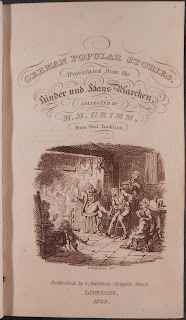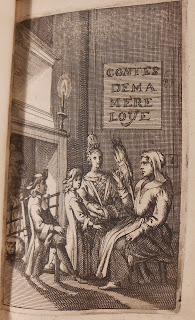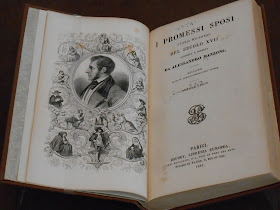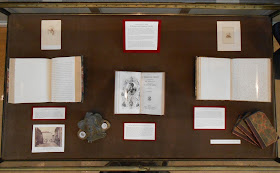 We just acquired the first English translations of the brothers Grimm's German Popular Stories. The first volume was published in 1823 and the second in 1826. The presentation of Grimm's fairy tales in English is much different than the first German editions from 1812 and 1815. The brothers Grimm were engaged in a philological exploration of German language and culture. The German title, Kinder und Hausmärchen, suggests that the stories were for children, but the scholarly apparatus and some of the more disturbing tales made the books a little less kid friendly.
We just acquired the first English translations of the brothers Grimm's German Popular Stories. The first volume was published in 1823 and the second in 1826. The presentation of Grimm's fairy tales in English is much different than the first German editions from 1812 and 1815. The brothers Grimm were engaged in a philological exploration of German language and culture. The German title, Kinder und Hausmärchen, suggests that the stories were for children, but the scholarly apparatus and some of the more disturbing tales made the books a little less kid friendly. When the volumes were translated in to English, though, the publisher commissioned the popular George Cruikshank to illustrate the volumes. Some of the more gory details of the stories were softened to appeal to multiple audiences and Cruikshank's illustrations give an indication of those audiences. For the first volume, the title page shows a man in a tavern reading aloud from a book to a group of entertained revelers of all ages. It is interesting that the tales come from a book in Cruikshank's vision, since they were collected by the Grimms from an oral tradition.
When the volumes were translated in to English, though, the publisher commissioned the popular George Cruikshank to illustrate the volumes. Some of the more gory details of the stories were softened to appeal to multiple audiences and Cruikshank's illustrations give an indication of those audiences. For the first volume, the title page shows a man in a tavern reading aloud from a book to a group of entertained revelers of all ages. It is interesting that the tales come from a book in Cruikshank's vision, since they were collected by the Grimms from an oral tradition. The second volume's illustration is an homage to the first printings of Charles Perrault's Mother Goose tales. The two images of an older woman sitting by a fire regaling a listeners with her tales are remarkably similar, even down to the cat warming itself by the fire. The big difference is that in Cruikshank's image, the listeners are obviously children, while there is plenty of ambiguity in the age of Mother Goose's audience.
The second volume's illustration is an homage to the first printings of Charles Perrault's Mother Goose tales. The two images of an older woman sitting by a fire regaling a listeners with her tales are remarkably similar, even down to the cat warming itself by the fire. The big difference is that in Cruikshank's image, the listeners are obviously children, while there is plenty of ambiguity in the age of Mother Goose's audience.To see the Grimm, ask for Rare PT921.K5613 1823. The 1697 Perrault is Rare PQ1877.C513 1697.

